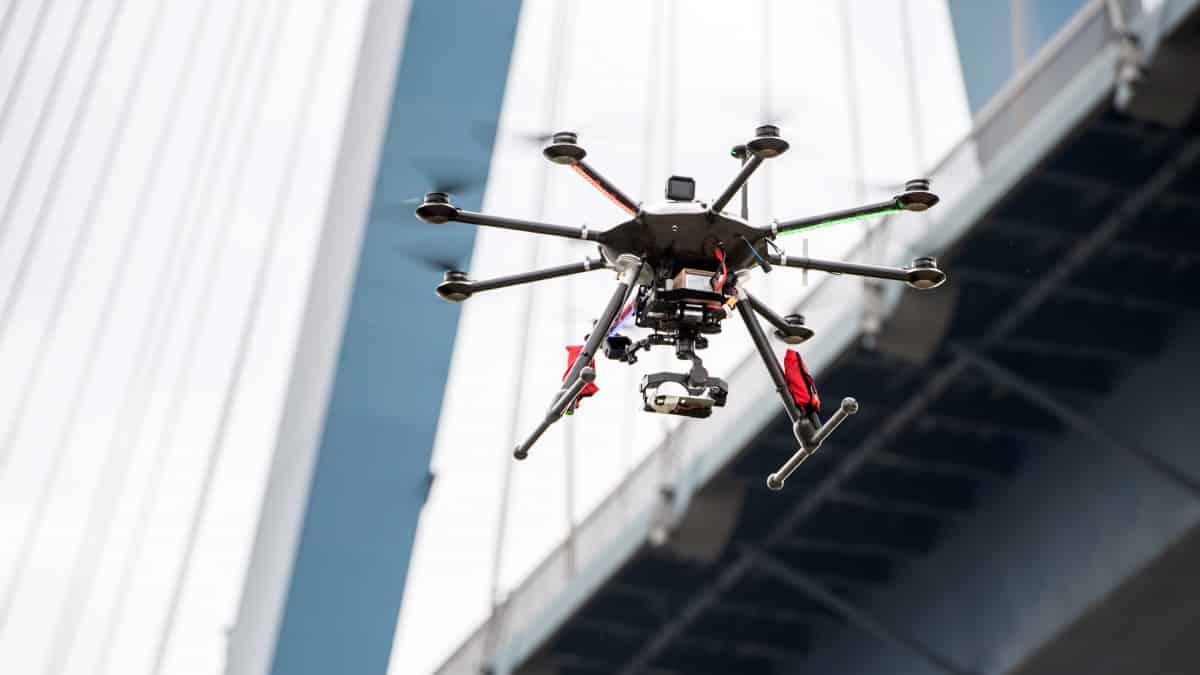
Up to now, the activity in the airspace above our cities is fairly limited. Air traffic to and from the airports is routed around cities as far as possible. The flight operations of sport and private aviation are also subject to strict regulations. On the other hand, police and rescue helicopters can move as operational necessities require.

Photo: DLR
However, this is currently changing. Even in urban airspace, conditions could soon be as cramped as on the roads below. Air taxis could take over a portion of passenger transport. The use of drones in commercial and private hands becomes more and more popular. In the future, drones will take over a broad spectrum of tasks. These could be courier or transport services, the inspection of bridges or large buildings, or traffic surveillance.
DLR researchers carry out flight trials
This places new demands on the control of airspace and air traffic. For example, unmanned drones and small aircrafts must recognise and avoid each other. At the end of April, the German Aerospace Center (Deutsches Zentrum für Luft- und Raumfahrt; DLR) demonstrated how this can work during flight trials in the Port of Hamburg.

Photo: Kirill Borisenko via Wikimedia Commons.
The flight test on 24 April 2019 is part of the larger City ATM research project. “ATM” stands for “Air Traffic Management”, i.e. the monitoring and control of air traffic. In the vicinity of the Köhlbrand Bridge, a busy motorway bridge, scientists had drones take off one after the other or together. In total, they used three drones. The aim was to inspect the Köhlbrand bridge for cracks during ongoing traffic. The bridge crosses a tributary of Hamburg’s main river Elbe, thus connecting various parts of Hamburg’s port facilities.

Photo: DLR
Two drones ascended together. Then they flew their routes next to and under the Köhlbrand bridge. A special communication and navigation technology was installed in the drones. It enabled fail-safe communication between the drones and their operators on the ground. This allowed the operators to constantly track the course and positions of the aircraft. In addition, German Air Traffic Control (DFS) , which is responsible for controlling air traffic over Germany, provided its surveillance data for the area.
City-ATM is a long-term project
“We have demonstrated under very realistic conditions how, with the help of networked flight planning, registration and identification, as well as flight monitoring, conflict detection and conflict avoidance, automatically flying camera drones can operate together safely in urban airspace,” said DLR Project Manager Stefan Kern from the DLR-Institute of Flight Guidance. “The example of an airborne bridge inspection was an ideal test scenario because the drones had to cooperate particularly close and dynamically.”
In the “City-ATM” project, DLR and other partners from the science community and industry are working together. Their aim is to develop new technologies with which drones and other autonomous aircrafts can be safely integrated into air traffic above our cities.








